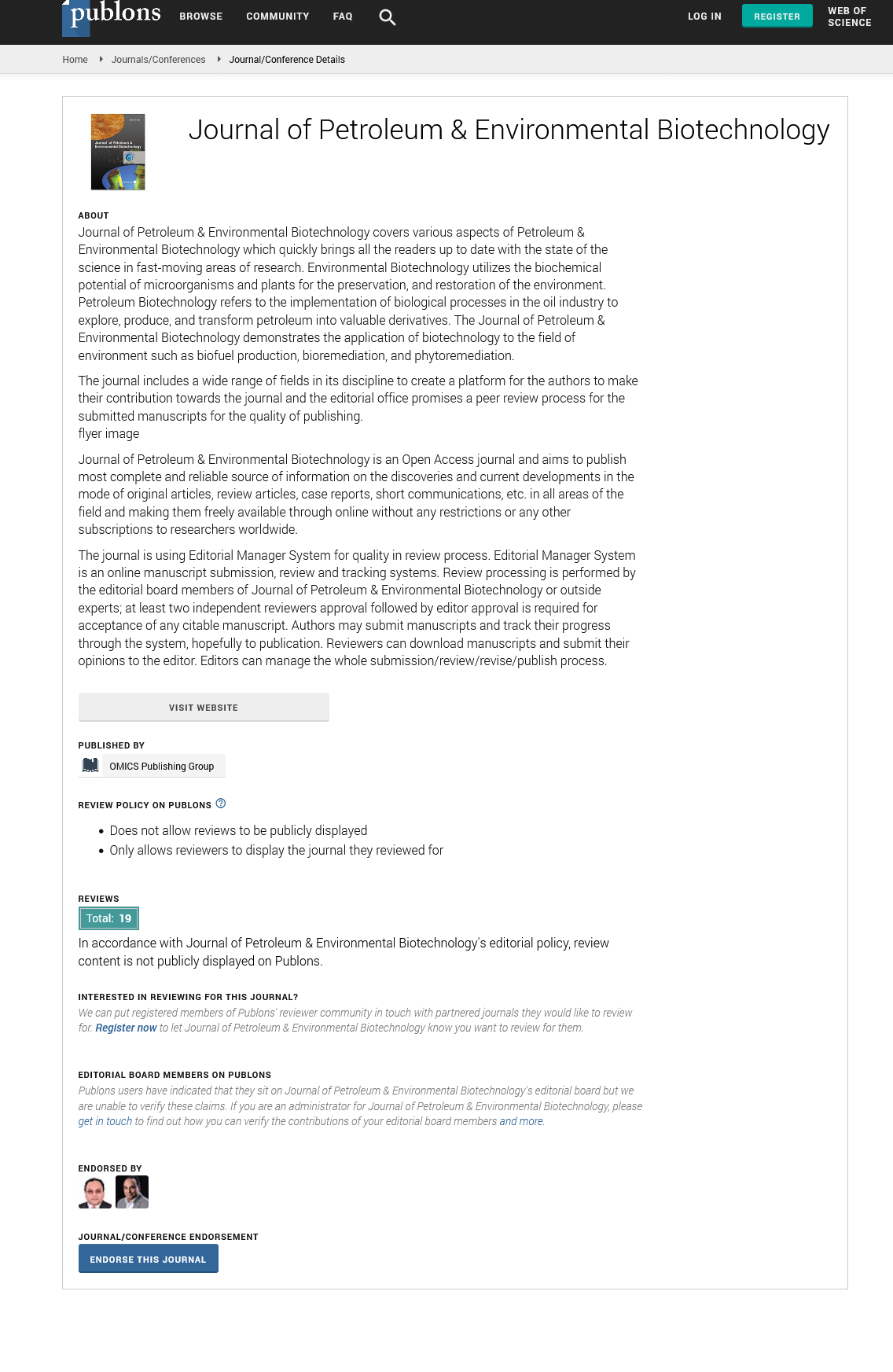Indexed In
- Open J Gate
- Genamics JournalSeek
- JournalTOCs
- China National Knowledge Infrastructure (CNKI)
- Electronic Journals Library
- RefSeek
- Hamdard University
- EBSCO A-Z
- OCLC- WorldCat
- SWB online catalog
- Virtual Library of Biology (vifabio)
- Publons
- MIAR
- Euro Pub
- Google Scholar
Useful Links
Share This Page
Journal Flyer

Open Access Journals
- Agri and Aquaculture
- Biochemistry
- Bioinformatics & Systems Biology
- Business & Management
- Chemistry
- Clinical Sciences
- Engineering
- Food & Nutrition
- General Science
- Genetics & Molecular Biology
- Immunology & Microbiology
- Medical Sciences
- Neuroscience & Psychology
- Nursing & Health Care
- Pharmaceutical Sciences
Analysis of chill-coma recovery in Indian Drosophila species
Anami Ahuja, Pushpander Kumar and Ranjeet S Tanwar
Abstract:
Chill-coma recovery is an important trait for thermal adaptation and a effective tool of cold resistance measurement in Drosophila species. Our study was aimed at evaluating chill coma recovery for D. kikkawai, D. melanogaster and D. ananassae at seven different geographical locations with varying altitudes. The flies (3-4 days old) were placed individually in 42 ml glass vials, which were immersed into ice in an insulated icebox. The vials were removed after 14 hrs and recovery time was scored. Flies were considered recovered when they stood up. These flies were initially reared at 21 ̊C temperature and were given a stress of 0-1 ̊C i.e. Chill Coma. Then the recovery time of males and females were noted separately at room temperature i.e. 25 ̊C. The average chill-choma recovery time in minutes for D. kikkawai female was 70.364?1.50 and D. kikkawai male was 67.542?1.43. The average chill-choma recovery time for D. melanogaster female was 34.57?0.61 and D. melanogaster male was 37.66?0.63. The average CCR time for D. ananassae female was 56.610?1.19 and D. ananassae male was 70.32?2.61. In case of D. ananassae female Chill-Comma mortality rate was 12-13%. In case of D. ananassae male Chill-Comma Mortality rate was 18-19%. In both D. kikkawai, D. melanogaster 100% chill comma recovery was observed with no Mortality. Our results indicate that D. kikkawai & D. melanogaster species are more tolerant to cold stresses and would rapidly adapt themselves in colder environment for survival than D. ananassae species. Keywords: Chill-coma recovery, Cold-Stress Resistance, Drosophila, Adaptation

